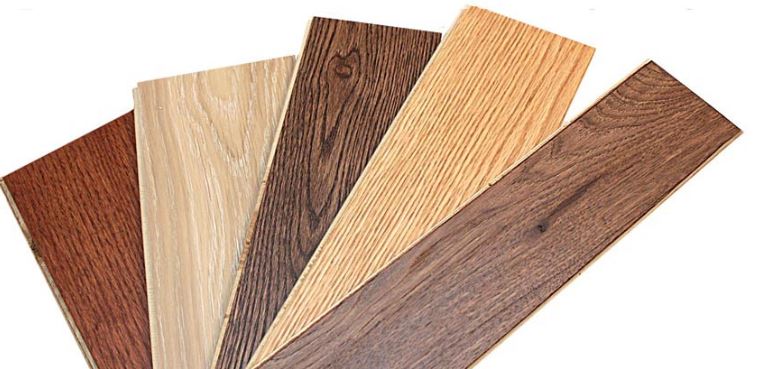Engineered flooring is becoming more popular in the current age, and for good reason. Engineered floorboards consist of multiple layers of wood pressed together. Typically, this wood consists of seven layers of wood but they may vary from four layers to as much as nine layers. From a longitudinal cross section, the layers of wood are placed at 90 – degree angles from each other. This implies that from a top view, the wood is layered perpendicular to each other layers of bread. The top and the bottom layer of wood is composed of actual wood.In the case of engineered hardwood the top and bottom layers would be composed of typical hardwood materials such as oak, maple or hickory.
There are multiple benefits to this scientific method of layering the wood. Most of them are a direct result of the manner in which the wood is layered.
Durability
The unique pattern used in layering ensures maximum support in the board ensuring durability. This is due to the resistance inherently found in the angle at which the word is layered. In a typical block of wood the wood fibres are parallel to each other. This implies that any impact that cracks through will easily penetrate the wood from the surface to deeper levels. However, in a structure in which wood is layered perpendicularly, a crack in the top layer may not translate into the subsequent layers since the crack may meet resistance. This implies that the wood can resist heavy weight.
Simplicity in installation
Engineered floorboards are quite easy to install and can actually done as a DIY for homeowners. The boards are designed to fit in with each other, with some even coming with a click system that allows the floor boards to intersect with each other.
Resistance to unwanted expansion or contraction due to heat
Typically, when one is constructing one’s flooring the idea is to fit the individual floor boards as tightly packed as possible to avoid sipping in of water or a weakness in structure that may develop as a result of isolation of the boards. Think of it as how it may be easy to snap one small stick but it is much more difficult to snap a bundle of sticks packed closely together. As a result of this, normal wood will be easily susceptible to effects of temperature and moisture.
Kitchen areas as well as bathroom areas have huge variations in moisture and temperature which may lead to expansion of normal boards and thus pluck the boards out of place. Engineered floorboards are not quite as susceptible to this effect. The layers of plywood are generally better conductors of heat and as such do not have quite the same expanding effect as normal wood. Furthermore, the perpendicular design makes it much easier for the layers to dissipate heat through the layers making it less likely to expand contract out of place.
Cost Effectiveness
Solid wood flooring is decidedly more expensive due to multiple factors such as sourcing of wood as well as the carpentry and workmanship that is needed to make the boards suitable for flooring. Furthermore, solid wood flooring may require specialised workmanship to install the boards unlike the engineered floorboards which are DIY; so there is the labour cost of that as well. Furthermore, the renovation of the solid wood is actually more costly than that of engineered floor boards. This implies that in the long run, solid wood is actually more expensive than engineered wood.
Environmental friendly
One plank of solid wood can produce up to 7 planks of high – quality engineered wood. This implies that the wood requirement of engineered wood could be up to 7 times less than that of solid wood for the same area of flooring. This directly implies that much less timber is needed to produce the same engineered floor boards.
Bottom Line
Engineered flooring provides multiple benefits directly related to the structure in which they are built. This implies that they may be a better choice for your home rather than solid wood. Furthermore, their compact natures as well as durability make it quite difficult for one to distinguish engineered floor boards from solid boards once they are installed. Engineered floors may be easily re – sanded as well as refinished to spruce up the look of your floors. This implies that they can both save you money as well as complement the appearance of your house. It may be time for you to start thinking long – term durability and cost effectiveness and invest in engineered floor boards for your home.
Read Also:
